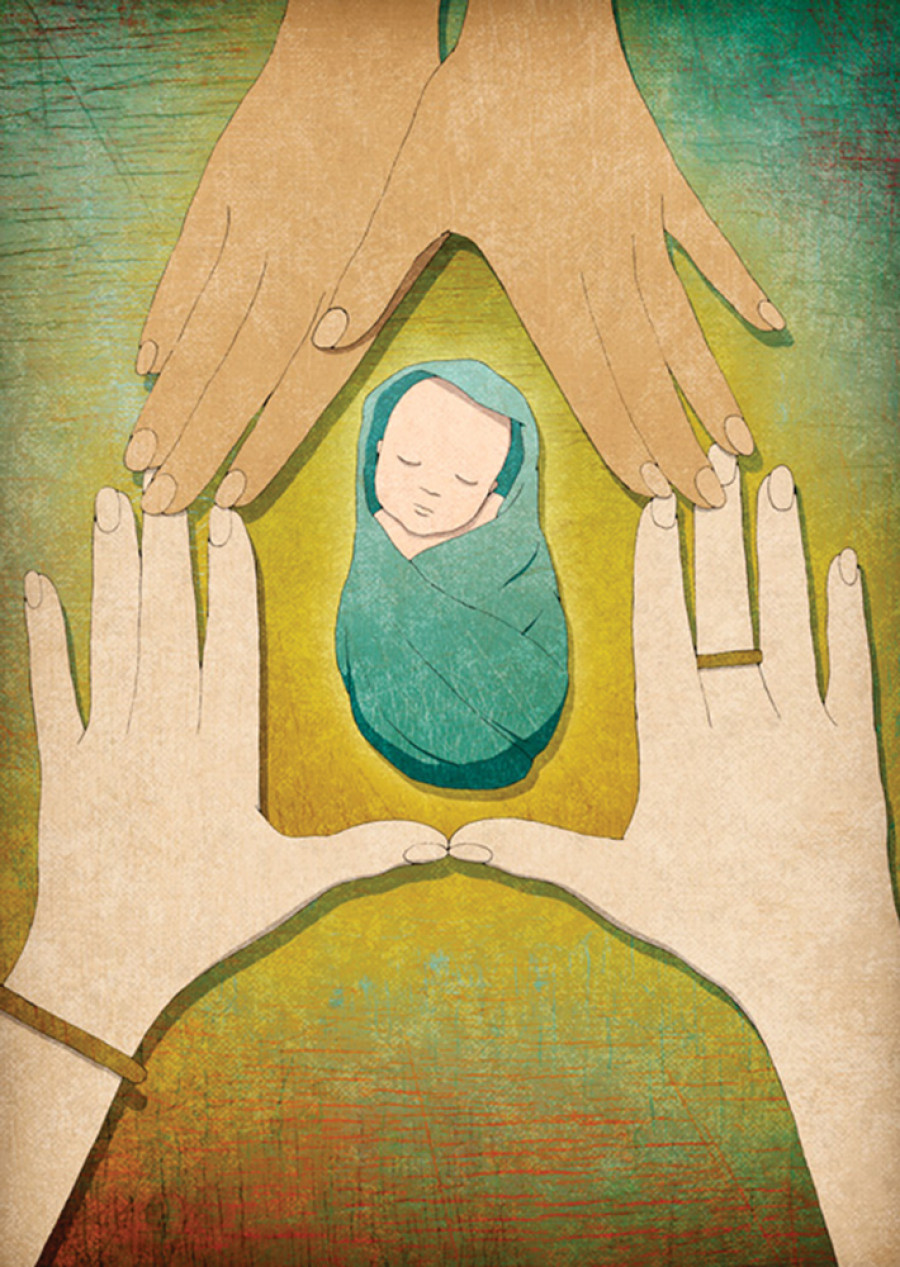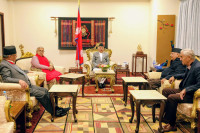Opinion
Unkindest cut
The increasing frequency of artificial birth in urban Nepal disempowers women
Laxmi Tamang
There is overwhelming evidence to prove that females are naturally stronger and empowered; however, they are weak and disempowered socio-culturally. Although it seems that modern urban females are relatively more empowered and stronger than their rural counterparts, there is an ingrained practice of making women weak and disempowered psycho-socially through professional and positional politics on their reproductive process. The increasing trend of planned artificial childbirth practices among urban childbearing women is one such example.
In rural areas, women are dying unnecessarily as they lack access to life-saving procedures of comprehensive emergency obstetric care such as caesarean section, anaesthesia and blood transfusion. In contrast, such practices are unnecessarily overused in urban areas among educated and economically better-off women who seek quality care in private and semi-private hospitals. For instance, in urban Nepal, 15 percent of women give birth
via caesarean section while in rural areas the figure is less than 4 percent. While childbearing women seek quality maternity care in private hospitals, it is ironic that they fail to see that the rising trend of giving birth by cutting their tummy disempowers them in their natural ability to give birth. Giving birth to a baby through one’s own effort and emotion empowers women and makes them stronger, courageous and confident. Trusting one’s own ability empowers individuals and boosts their inner strength and understanding of oneself.
Fear of childbirth
Surprisingly, along with the advancement in professional knowledge and modern technology, there is also a practice among medical professionals to help childbearing women give birth artificially. This is a global trend and can be found in urban areas of the developed and developing countries. Similarly, educated urban women prefer to use such technological practices to avoid going through the natural pain that they have to bear while giving birth vaginally. In fact, there is a common saying in the business world, no pain, no gain. This means that our childbearing women are losing something significant in the process of becoming a mother by facing the natural pain of childbirth that would empower them if they know their own body and mind. Fear of childbirth is known as tocophobia. Evidence suggests that around a quarter of the women can suffer from an intense fear of giving birth. This can be costly to these women in terms of enduring negative effects of the increased use of medical interventions associated with tocophobia.
Educated urban women should assert their constitutionally ensured right to make an informed choice to protect their own body and mind as well as their baby’s health and well-being. However, urban educated women are unintentionally and unknowingly letting themselves be disempowered and risking their children’s health by exposing them to chronic health problems later in life such as obesity, asthma, type 1 diabetes, rheumatism, allergies, bowel disorders and leukaemia by allowing professionals to decide what is good and right for their body.
Caesarean section rate
We women are not aware enough to change our attitude about the procedures that are being used unnecessarily by professionals who are motivated by money, prestige and position. Cutting women’s stomachs unnecessarily is all about financial gain for professionals involved in helping women give birth artificially. The World Health Organisation’s recommended minimum necessary caesarean section rate to avoid death and severe morbidity in the mother lies between 1-5 percent.
World renowned advocate of gentle birthing French obstetrician Dr Michel Odent has said, “Unfortunately, the role of obstetrics has never been to help women give birth. There is a big difference between the medical discipline we call ‘obstetrics’ and something completely different, the art of midwifery. If we want to find safe alternatives to obstetrics, we must rediscover midwifery. To rediscover midwifery is the same as giving childbirth back to women. And imagine the future if surgical teams were at the service of the women and the midwives, instead of controlling them. When you are in hard labour, remember that the length of labour is usually proportional to the number of people around. Avoid the presence of anybody who might release adrenaline. The best situation I know for an easy birth is when there is nobody else around than experienced, motherly and silent midwife who does not behave like a guide or an observer. One cannot actively help a woman to give birth. The goal is to avoid disturbing her unnecessarily.”
He further says that the truth for women living in a modern world is that they must take increasing responsibility for the skills they bring into childbirth if they want it to be natural. Making choices of where and with whom to birth is not the same as bringing knowledge and skills into your childbirth regardless of where and with whom you birth. Professional birth assistants and more humanised birth care that involves respecting women’s decisions and preferences during childbirth are important vehicles for providing a safe and comforting birth experience for women. Therefore, it is urgent to improve the availability of affordable services of competent, confident, committed and skilled birth attendants in underserved communities to provide humanised maternity care services that allow women to control the process.
“If birth matters, midwives matter. In Europe, there are hospitals where the cesarean rate is less than 10 percent, and you’ll find midwives in these hospitals, you’ll see a lot less re-admissions with infections and complications, and you’ll see a lot less injury to mothers,” said world renowned genital birth advocate Ina May Gaskin. Further, she says that when you destroy midwives, you also destroy a body of knowledge that is shared by women, that can’t be put together by a bunch of surgeons or a bunch of male obstetricians because physiologically, birth does not happen the same way around surgeons and medically trained doctors as it does around sympathetic women.




 12.12°C Kathmandu
12.12°C Kathmandu











